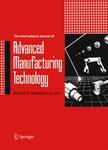版权所有:内蒙古大学图书馆 技术提供:维普资讯• 智图
内蒙古自治区呼和浩特市赛罕区大学西街235号 邮编: 010021

作者机构:Chung Hua Univ PhD Program Management 707Sect 2WuFu Rd Hsinchu Taiwan Chung Hua Univ Coll Management 707Sect 2WuFu Rd Hsinchu Taiwan
出 版 物:《INTERNATIONAL JOURNAL OF ADVANCED MANUFACTURING TECHNOLOGY》 (Int J Adv Manuf Technol)
年 卷 期:2025年第136卷第5-6期
页 面:2769-2799页
核心收录:
学科分类:12[管理学] 1201[管理学-管理科学与工程(可授管理学、工学学位)] 08[工学] 0802[工学-机械工程] 0811[工学-控制科学与工程]
基 金:All authors have declared that: (i) no support, financial or otherwise, has been received from any organization that may have an interest in the submitted work and (ii) there are no other relationships or activities that could appear to have influenced the submitted work
主 题:Production value chart Visualization Engineering value ECRS (eliminate Combine Rearrange And simplify) analysis Balance rate analysis
摘 要:In today s highly competitive manufacturing environment, continuous improvements in production efficiency play a crucial role in enhancing engineering value. This research paper presents a case study of Company S, a global leader in the production of gallium arsenide, to investigate methods for improving production efficiency. The study utilizes the eliminate, combine, rearrange, and simplify methods along with the line balancing rate to identify bottlenecks and minimize abnormalities in the manufacturing process. Furthermore, process management theories are employed to develop and implement the production value (PV) chart, which visualizes process management for improved production balance rates and reduced operating costs. The results indicate a significant increase in monthly production capacity (42%), a reduction in labor costs (20%), and a decrease in lead time (5 working days) through the adoption of the PV chart. This research demonstrates that the combination of the PV chart and process management theories provides a valuable tool for visualizing and improving process management not only in the semiconductor industry but also in other industries. The proposed method offers opportunities for reducing lead time, direct processing costs, direct material costs, and increasing productivity.